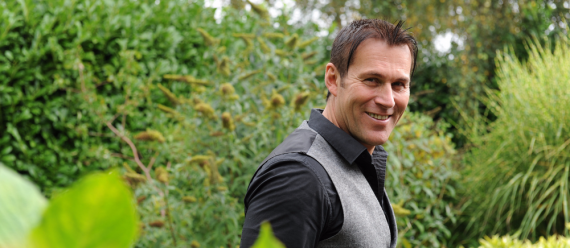A theoretical orientation
Before describing the actual process of coaching, we will first explain how thinking and acting during the process is theoretically oriented.
Since Jung has formulated his theories, we are familiar with the idea that a human being consists not of one single ‘I’, but rather of many different ‘I’s’ (parts, sub personalities, archetypes, energy patterns). Voice Dialogue, a method that was developed by psychologists Hal and Sidra Stone (a married couple), is based on the idea that these different parts, these subpersonalities can in actual fact be approached one by one.
Every subpersonality has its own willpower, its thoughts and feelings, and its own voice (Stone & Stone, 1989, e.a.).
Another important principle, used by the Stones, is the arrangement of the parts in polarities. On the one pole we find the parts a person has learned to use in order to survive, for example the controlling part, or the tendency to perfectionism; his critical abilities; and generally speaking, the rational energies that man can work with, and make use of, in order to deal with life. Another example of a part we use to survive, is the part that is being nice to people, the so-called ‘Pleaser’.
Every one of these parts, or poles, has an opposite that we are often not aware of, or that we have repressed. The parts situated on that side, are the opposites of the survival parts. For instance, opposite our ratio we may find our more emotional energies, opposite our power and independence there may be our needs, our weaknesses and our vulnerability. Opposite the Pleaser there would be the repressed, selfish side of us.
It appears again and again that, as human beings, we cannot function properly, neither in private, nor in professional life, if we do not understand these repressed parts of our selves. At a certain point we will discover that we lack something, when we live by means of our survival strategies only. This applies to us as individuals, but also to those individuals who work together within the framework of an organization, and thus hold on to a culture of organization in which only a certain type of behavior is appreciated.
At a certain point we will discover that we lack something, when we live by means of our survival strategies only (Halbertsma, 2000).
In fact, this means that we do not understand our own ‘disowned’ parts, nor the aspects of these parts that we encounter in other people. We do not get on well with the other person because we do not recognize these aspects in ourselves, and in our contacts we are confronted with barriers.
In Ofman’s theory with regard to working with the Core Quadrant, this is represented by the concept of ‘allergy’. A source of human development may often be found in converting this allergy into a personal ‘challenge’ (Ofman, 1992).
A distinguishing characteristic of ‘Voice Dialogue’ is its method of literally ‘giving a voice’ to the different parts of the personality, next to working on a growing awareness which ‘positions’ itself ‘above’ the different parts and may give them direction with increasing awareness (‘Aware Ego’).
Experiencing imbalance
One of the opposites turns out to be excluded, whereas we need both poles in our lives.
We experience an imbalance within ourselves, we feel tired, or we are the victim of a ‘burn-out’. This gives rise to questions as: how do we go on? Or: is this all there is? Am I becoming estranged from my environment? Is it possible to restore contact with my co-workers or my partner, which makes communication flow again? Do I need somebody to help me with it?
In our lives and in our work we are confronted by many issues. Sometimes we look for a coach to help us work on such an issue. In our experience, many of the questions people come up with, are linked to what we have described above. The question one asks oneself is the result of the imbalance between two sides of one’s self. One of the parts turns out to be excluded, whereas we need both poles in our lives.
Our strong points, for example, will increasingly be felt as oppressive, and our undeveloped parts as missing from our lives. We experience both sides as a field of tension between two poles, between two aspects of ourselves that appear to exclude each other.
Discovering energy yet again: Voice Dialogue
Making people aware of the connection between the two poles, will rebalance them, which generates a lot of energy.
Awareness by itself often leads to recovery; people will break out of an impasse, or they become aware of an involuntary tendency to shift between the (extreme) opposites within themselves. They will discover that they need both sides for a healthy mental life.
Using the Voice Dialogue method we will achieve more than just awareness: we will have the possibility to really experience the energies of a polarity, to deal with them, and to finally integrate them in our consciousness (Stamboliev, 1989).
The method:
- gives a subpersonality its ‘home’ and a ‘voice’;
- offers an opportunity to experience it completely, including its voice, its feelings and its posture;
- makes way for a more aware dealing with the subpersonality; and
- contributes to the integration of the different personalities within us.
We will now further examine the coaching process by means of the polarities derived from two practical examples. The situations described have ‘really happened’, but they have been compiled from different events, so that they cannot be traced back to concrete clients anymore.
Example 1: Being nice
Marian is a woman in her early fifties. Her question concerns the problems she experiences in working together with her co-director. It causes her a lot of stress. The co-directorship is the result of a recent reorganization. Marian describes her colleague as an authoritarian, manipulating personality, who is ambitious and not friendly. In our first session we make an inventory of Marian’s values; they consist of cooperation, openness, supportiveness and recognition. So, her values turn out to be the opposite pole of the values she attributes to her colleague. Marian says she wants to learn how to deal with this.
We start with one of her own values, i.e. ‘being nice’. She says she likes to be nice to others. Moreover, it turns out to be a survival mechanism that predominates in stressful situations. In the second session we examine what purpose ‘being nice’ has served in her life up till now.
Marian will now choose a different position in the room (sitting, or standing up) which she feels is suited to the part in her we now want to address. By literally ‘giving a voice’ to this side of herself, a number of things will become clear. She tells us why this part is present, and what it has meant to her. It will also become clear why this part is defending her, and against what. In her case, the origin could be found with her parents, who were quarreling all the time. She wanted to protect them, and herself, from this, by putting an emphasis on being nice. In this way she becomes aware of the fact that ‘being nice’ is an important part in her, which she has developed strongly.
This part of her has been listened to carefully, and Marian has experienced how she feels when it is allowed to take up all the space. That helps in becoming aware of it, and recognizing it, in daily life. After all, we are often dealing with subconscious patterns of which we can become more aware.
In the next session we pay attention to her vulnerability, which was protected by the survival mechanism of always being nice. If she is able to consciously take care of her own vulnerability, this will remove the sting from her conditioned behavior. Her nice side can stop working overtime and will be able to relax more.
This process by itself creates an opportunity to examine the less developed, ‘disowned’ part in a next session.
This part is exactly the opposite of ‘being nice’ (and therefore the other side of the polarity), and we can label it as ‘setting limits’.
It is given its own voice, too, and it will become clear that this part is definitely there, but hardly gets a chance to express itself. If it is allowed to be more present, Marian will have less stress and more energy.
By consciously learning to feel and experience both sides and becoming aware of the differences, Marian has more choice now to be nice or to set limits.
Presently it becomes clear that her collaboration with her colleague is improving because she sets more limits, which makes her more autonomous. She chooses not to discuss the teamwork itself with her colleague, because she feels he will not be willing to do so.
In the end, she prefers another position to her present one, because working together with her colleague continues to be a problem. But it is now an aware choice, not one made out of powerlessness.
Example 2: The hard worker
Marten has achieved a lot in life. He is 35 years old, has successfully set up a business in the communications sector, and employs twenty people. He would like an answer to the question why he is always tired and lacking energy, and out of inspiration. He has been referred to us by a friend who has gone through the same thing, and is familiar with working with polarities. When Marten arrives for his first session, he is not far from having a nervous breakdown.
Together, we examine which values are important to him. They turn out to be more than a few, for his strongly developed sides are:
- working hard, perfectionism and taking one’s responsibility;
- being liked.
Jointly, we establish that this combination of values offers every chance of having a nervous breakdown, and may explain why Marten is feeling the way he does.
Next, he gives a ‘voice’ to one of his developed parts, the ‘hard worker’. By engaging in conversation with this part, it becomes clear where the origin of the ‘hard worker’ lies, and what makes him tick. As a result, Marten will later on be able to better recognize this side of himself, as it appears. And something else happens, too, by giving a ‘voice’ to this part. Giving this side of himself all the space in the world, will allow him to take himself less seriously. It is as if the ‘voice’ exhausts itself and permits his opposite to appear.
Marten then experiences his other, less developed side. He feels sad and tired, and sees no way out. Nevertheless, he decides to keep examining this part and thus develop it further. He will spend more time doing his own things, doing nothing and being alone. At this point it is a conscious choice for him, something completely different from having a nervous breakdown and involuntarily ‘shifting’ to the other side by becoming ill and powerless. In this way he learns to take care of his vulnerability by himself, instead of letting his primary survival pattern deal with it.
In the next session, Marten examines how it will be if he is more often at home, taking time off for himself, having less social obligations. Will people still like him? For that was one of his values, too: ‘being liked’.
He wants to try to find a balance, within a ‘healthy egoism’.
We list Marten’s polarities once more:
- working hard, perfectionism and taking responsibility, as opposed to ‘letting it happen’ and ‘letting go’, or ‘not everything needs to be finished all the time’;
- the need to be liked, as opposed to ‘setting limits’ and ‘putting yourself in first place’.
The primary parts (the concepts on the left side) of Marten do not have to disappear, on the contrary, they belong to him. But having too much of them is not healthy, as he has experienced. It appears important to find a balance with the other side, the right side. This becomes possible because Marten has become aware of his vulnerability and his fears, which were protected by the survival pattern and which he can now deal with himself. Marten decides to keep the weekends for himself, to delegate more at work, plan his time with more discretion (for instance, limit the amount of business dinners) and in general have much more fun.
Lessons for the coach
For coaches, thinking in terms of polarities and examining which parts are more in the foreground than others, is a useful tool in establishing a diagnosis.
When one part is more developed than the other, the cause can often be found in our childhood; a certain type of behavior has been applauded and rewarded, to the detriment of other types of behavior. Consequently, we develop the behavior that was rewarded, and we apply it in our lives with success. In this way we ‘survive’ difficult situations and protect ourselves and our vulnerability. Sometimes, we base the choice for our professional lives on it. The disadvantage is that the opposite of the developed behavior hardly comes into the picture.
By becoming aware of this, we create more opportunities for choice, and energy is released; we develop less allergies and therefore encounter less conflicts in life.
Which are the questions we should ask?
- Which side is developed, and is it possible for the person concerned to become aware of it, experience it?
- Can we see the underlying vulnerability that is being protected by the developed side, and accept it?
- Can we put the less developed side in the picture?
- Can we subsequently take care of our vulnerability and choose out of awareness between both sides of a polarity, instead of being controlled by an unconscious but predominating pattern?
This type of ‘personal coaching’ is aimed at the development of the personality, at the balance within a person, at his motives to do something or to refrain from doing it, and at improving his vitality. It is a suitable form of coaching for people who dare look at themselves and do not find this threatening. We have discovered that there is no connection with the level of education of the persons concerned. We always start with someone’s strongly developed parts. It provides a feeling of security, and makes it easier to look at less developed parts later on. This form of coaching is by itself not suited to learning new skills, but the persons concerned do appear to start acting differently because of a new awareness. It was already present in the person, but can now find its way out, as it were.
In our experience, people typically need two to five sessions, each session taking between one and two hours.
This method of working with people makes specific demands on the coaching. Because a facilitator is required to give space to each voice in the other person, we, as facilitators, must be aware of the fact that similar parts in ourselves will be touched upon during a session. Sometimes we embrace those parts and recognize them, but at other times they are our own ‘disowned’ selves. We must be very aware of this, otherwise transference will take place. Working with Voice Dialogue requires additional training, apart from professional experience as a trainer or coach.
Literature
- Halbertsma, E.H. (2000). Dilemma’s te lijf. Assen, van Gorcum, 112 pp.
- Halbertsma, E.H. & D.Ratering (2001). Organisatiebelang en individueel belang, balanceren in een dilemma, HRD Thema, Jaargang 2, nr. 4, pp.51-59.
- Mulder, L. (2001). Een aanpak voor duurzame gedragsverandering, Opleiding & Ontwikkeling, nr. 12, pp. 38-41.
- Ofman, D. (1992). Bezieling en kwaliteit in organisaties. Utrecht, Kosmos-Z&K Uitgevers, 206 pp.
- Stamboliev, R. (1989). The Energetics of Voice Dialogue, Mendocino, LifeRhythm..
- Stone, H. & S. (1989). Embracing Our Selves. Novato, CA., Nataraj Publishing.
- Stone, H. & S. (1991). Embracing Each Other. Novato, Nataraj Publishing.
- Stone, H. & S. (1993). Embracing Your lnner Critic. San Francisco, Harper.















